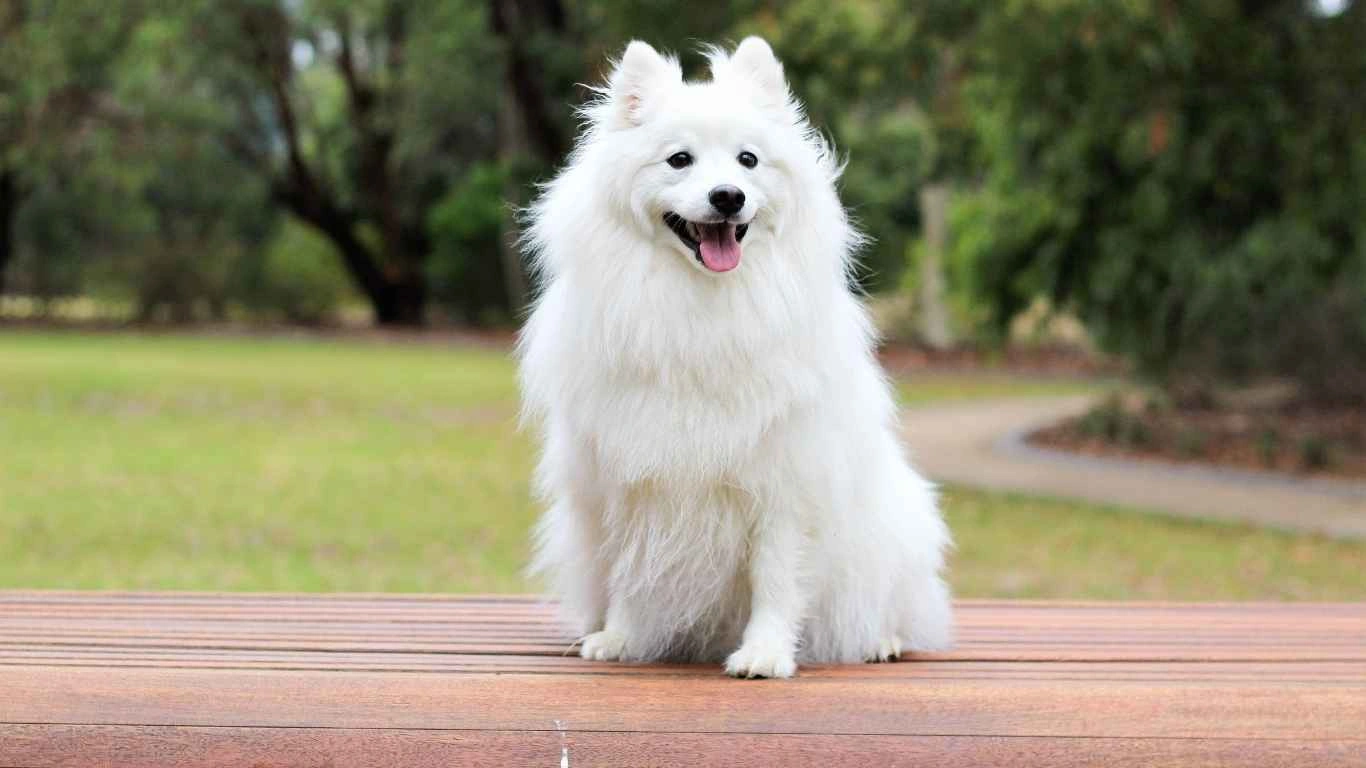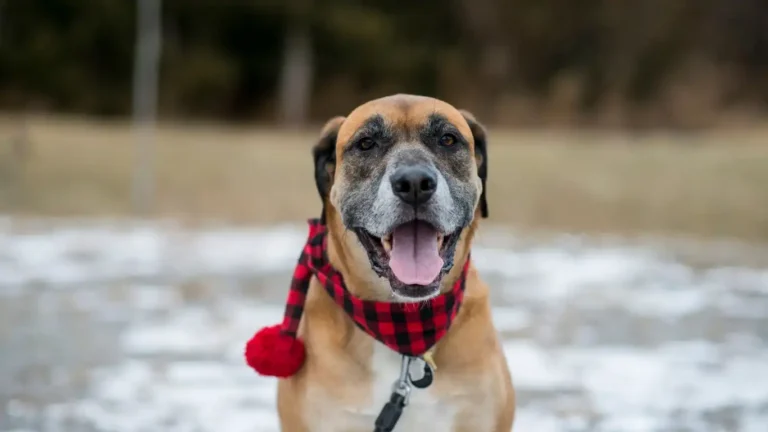Best Natural Appetite Stimulants for Dogs That Really Work
Let’s be real—getting a dog to eat when they’ve got zero interest in food is one of the most frustrating things we deal with as pet parents. I’ve seen it all during my years working in shelters and vet clinics—picky eaters, dogs recovering from illness, seniors who’ve just lost their spark around mealtime. You feel helpless, right? But there’s hope. That’s where the best natural appetite stimulants for dogs come into play. Whether you’re dealing with a stubborn pup or a senior pooch with a fading appetite, there are gentle, safe, and natural ways to nudge them back toward their bowl. I’ve used a bunch of these methods personally and professionally, and trust me—they really can make a difference.
Understanding Why Your Dog’s Not Eating

Before diving into solutions, it’s important to understand what’s going on. Not every dog skipping a meal is automatically in crisis—but sometimes, it’s more than just being fussy. In the clinic, I always start with a few questions: Is the dog acting normal otherwise? Any vomiting, diarrhea, or lethargy? Have there been recent changes in the home—new food, new pet, stress, or travel? Appetite loss can be behavioral, emotional, or medical.
Common Causes of Appetite Loss in Dogs
- Medical issues – Dental pain, gastrointestinal discomfort, infections, or chronic illness like kidney disease or cancer.
- Medication side effects – Some drugs, especially antibiotics or pain meds, can mess with their tummy or just kill their appetite.
- Stress and anxiety – Yep, dogs get stressed too. Big changes in routine or environment can throw them off.
- Food fatigue – Dogs can totally get bored of eating the same thing every day. Just like us, they crave a little variety sometimes.
When I worked in shelters, we saw appetite drop in dogs newly surrendered. It wasn’t about the food—it was grief, fear, and adjustment. In those cases, being gentle and patient while introducing some natural appetite boosters made a world of difference.
Best Natural Appetite Stimulants for Dogs

Alright, here’s the part everyone really wants: what can I actually give my dog to help them eat? Good news—there are plenty of natural options that don’t require a prescription or a chemistry degree. I’m a big believer in starting with nature, especially for mild cases or support during recovery. So here are some of the best natural appetite stimulants for dogs that I’ve seen work time and time again.
1. Bone Broth
This is hands down my favorite go-to. It’s warm, smells amazing, and is loaded with nutrients. You can either buy it (look for pet-safe versions with no onions or garlic) or make it yourself from scratch. Pour a little over their kibble or serve it separately—it usually gets tails wagging. Plus, it’s hydrating and easy on the stomach.
2. Ginger
Yep, the same root we use for nausea works great in dogs too. A small sprinkle of powdered ginger in their food can calm an upset stomach and encourage eating. I used this trick a lot with dogs coming out of anesthesia or dealing with motion sickness.
3. Goat’s Milk
Fermented raw goat’s milk is not just trendy—it’s actually really beneficial. It’s full of probiotics, easy to digest, and slightly sweet, which dogs often find appealing. I’ve watched it turn around more than one “nope, not eating today” situation.
4. Fresh Herbs: Parsley & Basil
Some dogs go nuts over fresh smells. Chopped parsley or basil sprinkled on top of food can be surprisingly motivating. Plus, they’re good for breath and digestion. We had an older dog at the clinic who wouldn’t touch food unless it had something “green” on it—go figure!
5. Sardine Oil or Salmon Oil
Fish oils are not only great for skin and coat, but their strong smell can help draw dogs to their bowl. Just a drizzle is enough. Look for wild-caught options without additives. This was a secret weapon for some of the underweight rescues we worked with.
6. Warming Up Food
Okay, technically not an “ingredient,” but this trick works like magic. A quick zap in the microwave (10–15 seconds tops) can release the aroma and make the meal more appealing. This is especially helpful with wet food or home-cooked meals.
How to Safely Introduce Natural Stimulants

It’s tempting to try everything all at once—but hold up! Start slow. Introduce one thing at a time and see how your dog responds. This is super important if they’ve got sensitive tummies or you’re not 100% sure about allergies. I’ve always told pet parents to keep a little food journal: note what you tried, how much, and what the result was. Helps so much if you ever need to talk to your vet.
- Try one stimulant at a time—don’t mix everything in at once.
- Use small amounts first to test for tolerance.
- Watch for changes in appetite, behavior, or digestion.
- Talk to your vet if appetite loss continues beyond 24-48 hours.
And hey, it’s okay if your dog’s not bouncing back overnight. Natural appetite boosters are gentle by design—they support the process, they don’t force it. Patience really is your best friend here (after your dog, of course).
What If Natural Appetite Stimulants Aren’t Working?

Alright, let’s say you’ve tried bone broth, goat milk, and even that parsley trick, but your pup’s still giving you the side-eye at dinner. Been there. The first thing I always remind folks is this: appetite loss is a symptom, not the root issue. If your dog’s refusing food consistently—like for more than a day or two—it’s time to dig deeper. When I worked intake at the shelter, we always had a vet tech check for things like dental issues, nausea, or underlying pain before assuming a dog was “just picky.”
Don’t Skip the Vet Visit
I know it’s tempting to DIY your way through it (hey, I’m all for natural remedies), but a vet can spot signs of trouble we might miss. Things like pancreatitis, kidney issues, or even a sore tooth can totally shut down a dog’s appetite. And let’s be real—dogs hide pain like champs. So if your natural appetite boosters aren’t making a dent in a couple of days, call your vet. No shame in needing backup.
Supporting Recovery: When Dogs Are Healing or Aging

One of the most common times we reach for appetite boosters is during recovery. Whether it’s post-surgery, after illness, or during hospice care, dogs need gentle encouragement to eat and keep their strength up. I had an old lab named Charlie at the clinic once—we called him our “gentle grandpa.” After a rough dental surgery, he just… gave up on food. Wouldn’t touch kibble, ignored wet food, turned his nose up at everything.
What finally worked? A warmed-up mix of goat milk, sweet potato purée, and just a dab of peanut butter. Sounds weird, right? But it hit the right combo of smell, taste, and texture. He perked up within hours. Point is—recovery feeding is about custom comfort. Dogs need familiar, soft, often warm foods that are easy to swallow and digest.
Top Natural Mix-Ins for Recovery Meals
- Sweet potato – Soft, bland, and full of nutrients
- Unsweetened pumpkin purée – Great for digestion and gentle on the tummy
- Peanut butter (xylitol-free) – Dogs love it, and a little goes a long way to flavor food
- Shredded chicken – Plain, boiled, and shredded finely; great protein boost
- Soft scrambled egg – Easy to chew and packed with protein
Just be mindful of fat content—too much richness too fast can upset the belly, especially in sick or older dogs. And of course, always double-check ingredients (especially with store-bought broths or peanut butter—no xylitol, ever).
Creating a Feeding Routine That Encourages Eating

One thing I learned early in my animal care days: routine is everything. Dogs thrive on it. I’ve seen stressed-out pups refuse food for days, only to bounce back once they had predictable mealtimes and a little encouragement. So if you’re adding in natural appetite boosters, try doing it the same way, same time, every day.
Tips for Mealtime Success
- Set the mood – Calm, quiet feeding space away from chaos or other pets
- Warm it up – A few seconds in the microwave can turn “meh” into “yum”
- Use a food topper rotation – Don’t use the same mix-in every day; variety keeps interest high
- Stay nearby – Some dogs eat better when you’re close (but not hovering!)
- Keep mealtime short – Offer food for 15-20 minutes, then pick it up; this sets clear boundaries
And don’t forget praise! Positive reinforcement goes a long way. If your dog eats even a little, let them know they did good. A gentle “Good boy!” or a few belly rubs afterward can associate eating with love and safety.
Natural Supplements That May Boost Appetite
Alright, now we’re wading into the “supplement shelf” territory. There are some natural products out there that can help stimulate appetite, especially if your dog’s dealing with stress or chronic issues. I’ve used a few of these with foster dogs that were underweight or just plain nervous eaters.
Common Natural Supplements
- CBD oil (vet-approved only) – Can reduce anxiety and promote calmness around mealtime
- Probiotics – A healthy gut = better digestion = stronger appetite
- Chamomile or valerian root – Gentle calming herbs that may help if anxiety is part of the issue
- Digestive enzyme blends – Some dogs don’t process food well, so this can help them feel better after eating
As always, don’t just grab stuff off the internet. Work with your vet or a pet nutritionist to choose the right supplement and dose. I’ve seen dogs react poorly to certain herbs or oils when given without proper guidance. Natural doesn’t always mean safe for every dog.
That said, with the right plan—and a little trial and error—natural appetite stimulants can be a game changer. I’ve watched skinny rescues gain healthy weight, grumpy seniors rediscover their dinner bowls, and anxious pups find peace at mealtime. It’s not magic. It’s care, observation, and consistency.
Feeding Picky Dogs: Creative Natural Tricks That Actually Work

Let’s be honest—some dogs are just naturally picky eaters. Not sick, not stressed, just… bougie. You set down a bowl of healthy, balanced food, and they give you that dramatic slow-turn-away like it’s beneath them. I’ve had a couple of those myself in the foster world. One little Chihuahua mix actually “buried” her kibble with her nose like she was offended I even offered it. (She ended up loving a little duck broth over her food, by the way.)
If you’ve got one of those picky princes or princesses, don’t worry—there are still gentle, natural appetite stimulants for dogs that can coax them into eating without forcing or stressing them out. It’s all about making food feel exciting again. And a little creativity goes a long way.
Natural Flavor Boosters to Try
- Grated cheese – A tiny sprinkle (just a bit!) can add irresistible aroma. Parmesan works wonders.
- Coconut oil – A teaspoon melted into food adds healthy fats and a sweet scent dogs love.
- Low-sodium chicken stock ice cubes – Great for warm weather. Toss a cube in the bowl or water dish.
- Herbal teas like chamomile or fennel – Cooled, of course. Pour over dry food to soften it and add aroma.
- Crumbled freeze-dried treats – Smash a liver or duck treat into powder and mix it into food.
Just remember—these aren’t meant to replace balanced nutrition. Think of them like croutons on a salad: just enough to tempt, not dominate.
How Environment Affects Appetite

One thing that gets overlooked a lot? The environment during mealtime. I can’t tell you how many times a dog refused to eat in the noisy kennels, only to wolf down the same food in a quiet office. The setting matters. Dogs pick up on everything—energy, sounds, smells. If mealtime feels chaotic or tense, they might just say, “Nah, I’ll pass.”
Easy Environmental Tweaks
- Feed in a calm, familiar space away from other pets
- Try using a raised bowl for large or senior dogs
- Stick to consistent feeding times
- Remove uneaten food after 15–20 minutes to establish structure
- Try puzzle feeders or snuffle mats to make mealtime more fun
These changes might sound small, but they really do help. A nervous or overly excited dog often won’t eat—not because they’re not hungry, but because they can’t settle. In those cases, the best natural appetite stimulants for dogs might not even be food at all—it’s peace, quiet, and routine.
When to Consider Long-Term Appetite Support
If you’re caring for a dog with chronic illness, aging issues, or long-term recovery, natural appetite support might need to become part of your routine. I’ve cared for hospice dogs who needed every mealtime to be custom-tailored. At that point, you’re not just trying to get calories in—you’re giving comfort and quality of life.
In these situations, consistency is key. Keep a log, rotate natural stimulants, and talk with your vet about options that fit your dog’s specific condition. I’ve worked closely with vet teams to create gentle feeding plans for dogs on medications or battling long-term conditions like liver disease or cancer. It’s a team effort, and it’s totally okay to lean on professionals.
Trusted Resources & Expert Advice
When it comes to using natural remedies safely, I always point pet parents toward vet-backed sources. There’s a lot of well-meaning but not-so-great info online, so stick with reputable sites when doing your research. Some of my go-to references include:
These sites offer reliable, evidence-based articles and breakdowns of ingredients, herbs, and supplements. If you’re unsure about a particular food or remedy, check there—or better yet, check with your vet.
Final Thoughts: Keep It Natural, Keep It Kind
I know firsthand how discouraging it can be when your dog won’t eat. You feel helpless. But take it from someone who’s worked with the pickiest pups and the most fragile seniors—there’s almost always a gentle, natural path forward. Whether it’s bone broth, a cozy feeding nook, or just figuring out their favorite “secret ingredient,” you’re not alone in this. You’re showing up, and that matters.
And honestly, the journey of discovering what helps your dog eat again can deepen your bond in ways you didn’t expect. Trust your instincts, lean on the pros, and don’t be afraid to try something new (as long as it’s safe).
You’ve got this—and so does your pup.
Disclaimer
This article is for informational purposes only and is not a substitute for professional veterinary advice, diagnosis, or treatment. Always consult your veterinarian before introducing new foods, supplements, or feeding routines—especially if your dog has existing health issues.





